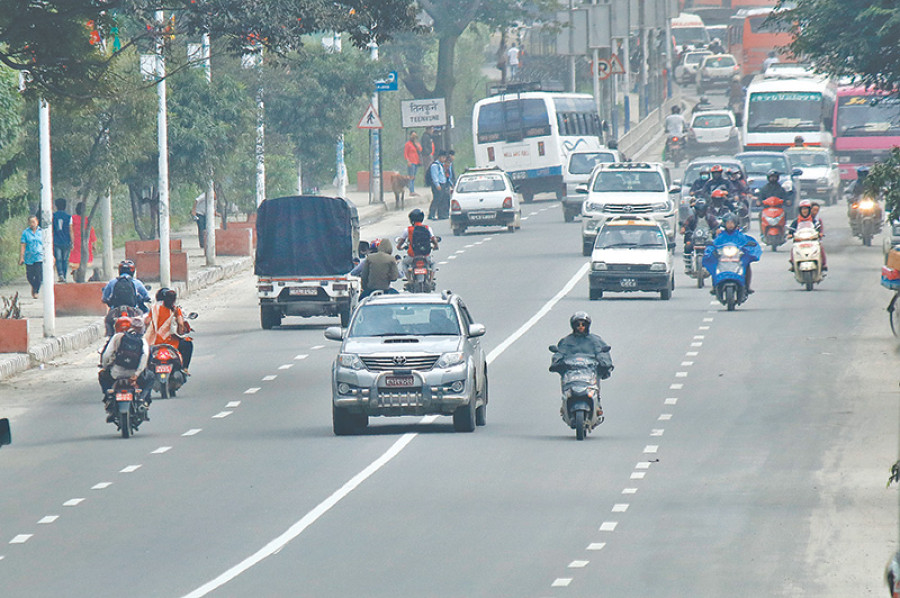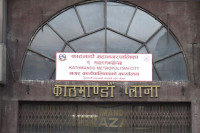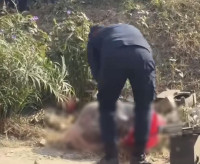Valley
For two-wheelers, lane means nothing
Two years since the launch of a special campaign by the Metropolitan Traffic Police Division to maintain lane discipline, traffic offences are on the decline but road discipline continues to be lacking, often becoming the primary cause of accidents.
Nayak Paudel
Two years since the launch of a special campaign by the Metropolitan Traffic Police Division to maintain lane discipline, traffic offences are on the decline but road discipline continues to be lacking, often becoming the primary cause of accidents.
Of the 6,381 accidents recorded in Kathmandu Valley last year, 63.68 percent involved two-wheelers, killing at least 111 riders. Officials at the traffic police division (MTPD) say the two-wheelers are the major violators of lane rules as they break speed limits.
“Two-wheelers are only concerned about reaching their destination fast,” Superintendent of Police Raj Kumar Lamsal, a spokesperson for the MTPD, told the Post. “They ignore the possibilities of having an accident or getting a ticket for violating the traffic rules designed for road safety.”
Lamsal said that strict enforcement of lane discipline by traffic police has been effective in lowering the number of traffic offences.
A total of 73,205 people were fined by the traffic police for lane violations, resulting in Rs39,294,400 last fiscal year. In the fiscal year 2016-17, a total of 162,687 people were fined, bringing in a whopping Rs83.7 million to the state coffers.
According to MTPD records, traffic offences have been on the decline, in part due to strict fine procedures, but there is still a long way to go before road discipline ensures drivers—and riders—have a safe journey.
While Lamsal, the MTPD official, insists that the public should be aware of, and abide by, the traffic rules, most commuters seem to be unaware of the lane rules or are confused about the lane markings, often faded or non-existent.
“I have been driving motorbike for two years but I am still confused about the lanes,” said Kapil Balami, 21, from Kalanki. “I am always afraid of getting a ticket for lane violation.”
There are two kinds of lane markings on the road—solid white strip and broken white strips. A solid white strip indicates that commuters have to keep within the line while a broken one suggests that they can change lanes or make a turn, depending on the traffic condition.
Adding to the confusion are inconsistent lane markings, faded strips, and, in some cases, roads with no lane markings at all. Commuters say all of this adds to vague messaging they get while on the road.
“Since many roads have no white lines in between, it is always difficult to ride and change the lanes in need,” said Binod Kunwar, 24, another two-wheeler rider from Kirtipur. “We have to go further in search of a visible lane to take a U-turn.”
Officials at the Department of Roads said all the lines will be re-painted before November.
“It is difficult to paint the markings on the road in the rainy season,” said Mukti Gautam, a spokesperson for the department. “As soon as monsoon comes to its end, we will start painting all the roads across the country—visible white lines as well as other indicators.”




 13.12°C Kathmandu
13.12°C Kathmandu











